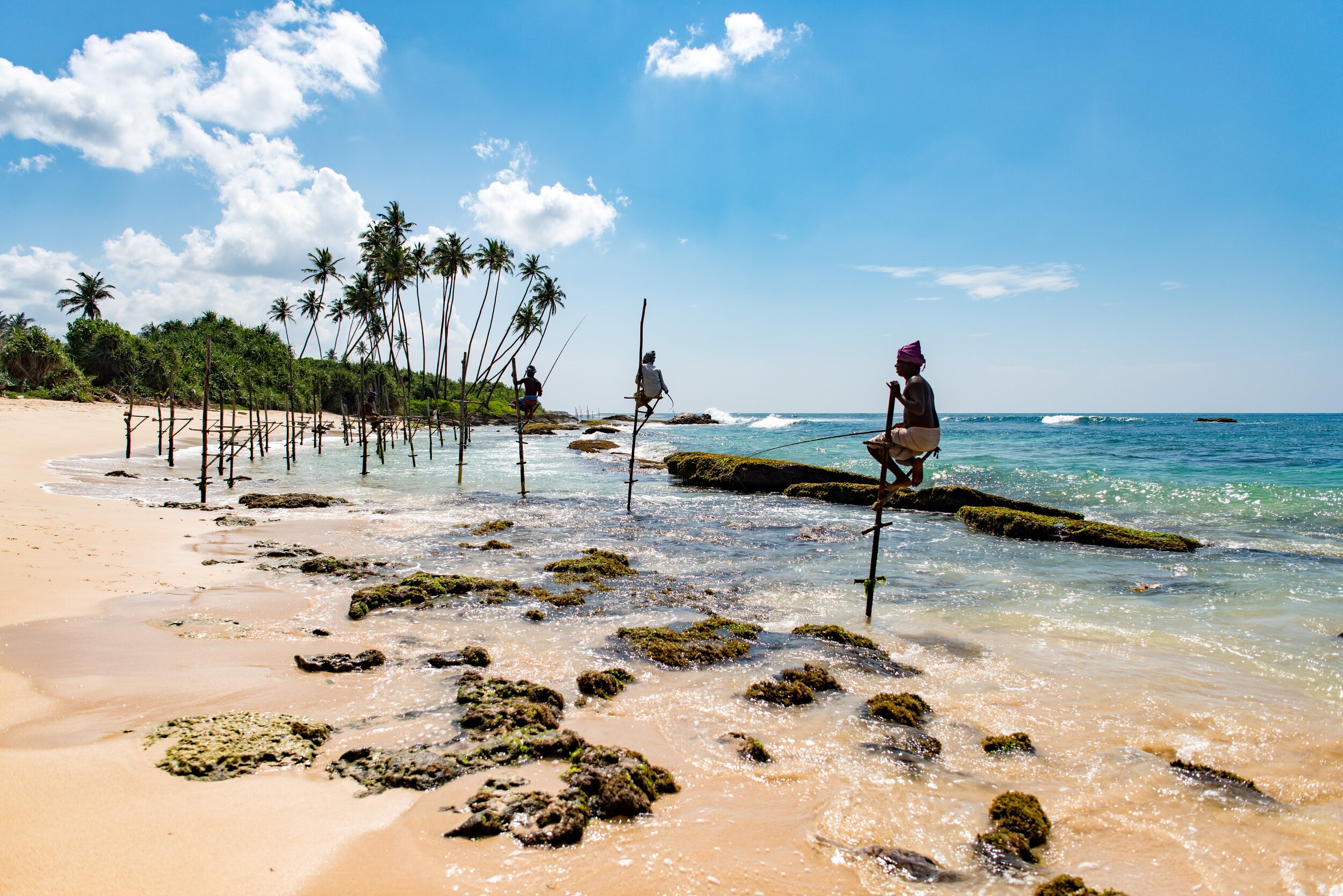Stilt Fishing in Sri Lanka
Location: Mirissa Beach, Sri Lanka
Photo by: Daniel Klein
As many people know, Sri Lanka, the pearl of the Indian Ocean, is famous for its history, food, tea, green nature, and sandy beaches. Speaking about beaches, one thing that amazes many tourists that visit this small country is the traditional fishing methods adopted by the local fishermen. This method is known as stilt fishing and has been the inspiration for many famous paintings and photographs.
What is Stilt Fishing?
Stilt fishing, also known as Ritipanna in Sinhalese, is a traditional fishing method in Sri Lanka. It came into being during World War II when there were food shortages, and all the fishing spots were overcrowded. Due to this, it led some innovative fishermen to try fishing in the water.
They first started off using the wreckages of capsized ships and downed air crafts; eventually, they learned to erect the stilts into coral reefs. This fishing method requires a lot of skill and is not as easy as it seems. If you do not know what you're doing, it's almost impossible.
The Effect of the 2004 Tsunami
Stilt fishing was quite popular and was widely practiced all along the south coast of Sri Lanka. However, the devastating tsunami that hit the country during the year 2004 caused this traditional fishing method almost to cease. When the tsunami hit, it altered Sri Lanka's shoreline forever, and the practice of catching fish using this method dramatically changed. But it is not entirely forgotten as this tradition is still common among few fishermen in towns such as Koggala, Ahangama, and Kaththaluwa.
How is Stilt Fishing done?
To perform Stilt fishing, fishermen take a vertical pole with a crossbar attached to it. After that, they embed it into the seafloor in the shallows. Because of the crossbar, fishermen can sit a few meters above the water, causing minimal shadows and no disturbance to sea life. Afterward, the fishermen use rods to bring in small mackerels and spotted herrings. The catch they collect is placed into a bag tied around their waist or to the pole.
This whole process might sound easy, but it requires a lot of patience and endurance. The first thing you must do when stilt fishing is striking balance while sitting on the wooden plank. After that, you need to be very quiet, and sometimes it requires several hours of waiting before you can catch any fish. The long hours of waiting for fish causes numbness in the feet, something that most people aren't able to bear, but it's something that Sri Lankan fishermen have mastered.
The Southwest Monsoon
During the southwest monsoon, the stilt fishing season is at its peak because the sea is quite rough during this season, making it unsafe for boats to go out fishing. Due to this, all the fishermen who use boats also transfer to stilt fishing. If you want to see stilt fishermen, the best times to visit the southern coastal belt is during sunrise and sunset. The sunrise session goes till about 9 am, but it depends on how much fish they can catch. But most fishermen that do stilt fishing during sunset are usually there to entertain foreigners. After the fishermen have finished stilt fishing, villagers and locals come to buy fresh fish from them. Finally, when all their days' catch is sold, they leave until the next session and so on.
Many people are left amazed at this challenging yet extraordinary fishing technique that the local fishermen have adopted. Some tourists are invited to try it out themselves; however, most of them claim that it's indeed a difficult task.
A Memory You Won’t Forget
If you want to witness stilt fishing, be sure to visit the southern coastal belt of Sri Lanka. Although it's not as common as it used to be, ask a few villagers, and you'll be able to find a few spots where stilt fishing is still practiced; it'll be a memory you won't forget.

